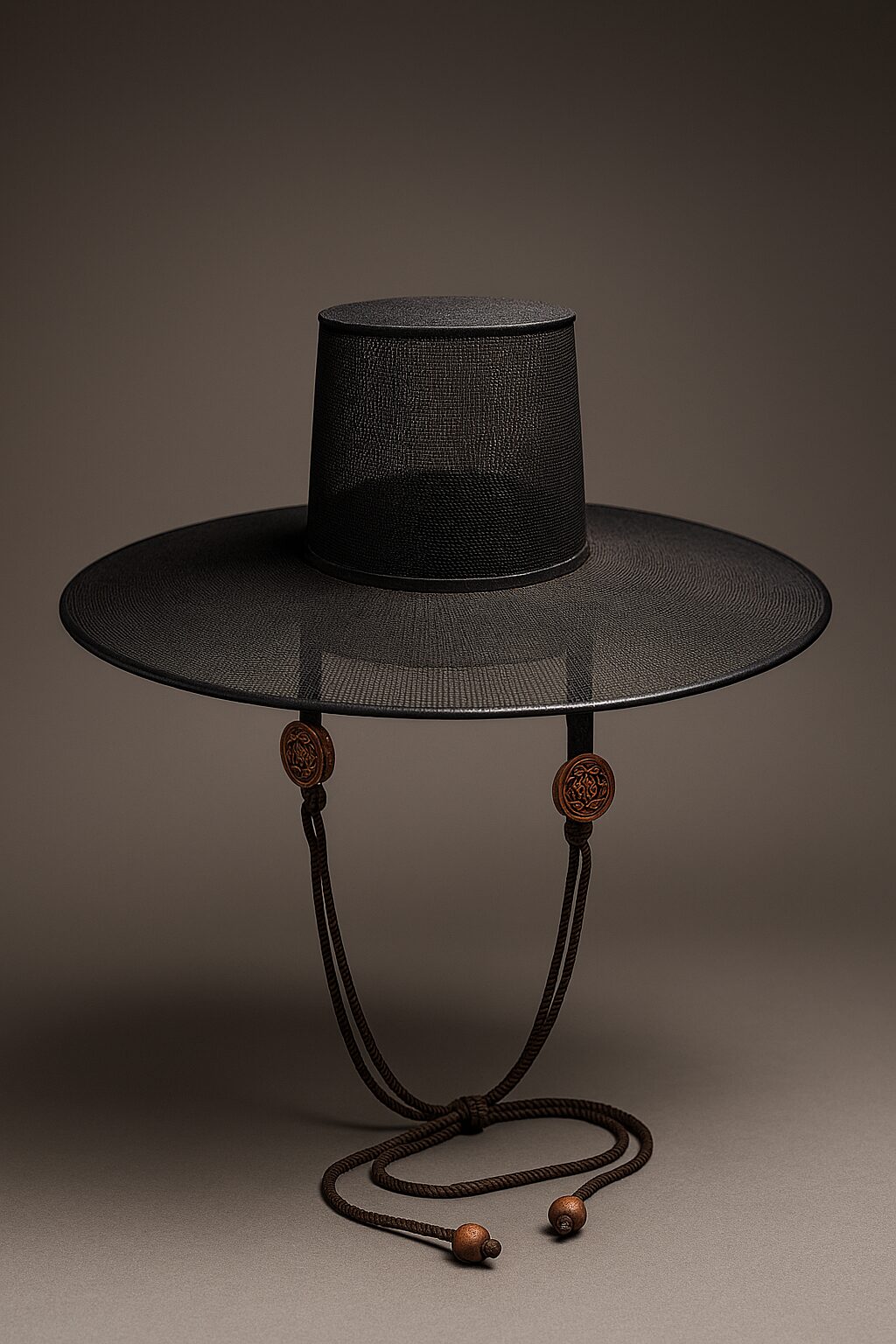🧠 Article: The Korean Gat — Tradition Meets Trend
The gat (갓) is a traditional Korean hat worn by men, especially during the Joseon dynasty (1392–1897). With its wide brim and cylindrical crown, the gat was more than just a fashion item — it was a symbol of status, identity, and cultural values.
🕰️ Origins and Evolution
The earliest forms of gat-like headwear date back to ancient Korea, with examples found in Silla and Goguryeo tomb murals. However, the iconic black gat that we recognize today — often seen in historical dramas and K-pop performances — was standardized during the Joseon era, where it became a staple of male attire.
🎭 Who Wore the Gat and Why?
Traditionally, the gat was worn by yangban, the noble class, and scholars who had passed the gwageo (civil service exams). It served multiple purposes:
- Symbol of social rank and education
- Protection of the sangtu, the topknot hairstyle
- Expression of Confucian values, such as modesty and dignity
Different colors and styles of gat indicated specific roles:
- Black gat (heungnip): worn by civil officials
- Red gat (jurip): worn by military officers
- White gat (baengnip): worn during mourning
- Paeraengi: a simpler bamboo version worn by commoners
🧵 Materials and Craftsmanship
The gat is traditionally made from horsehair and bamboo, woven into a semi-transparent structure. The process, called gannil (갓일), is so intricate that artisans who master it are recognized as Intangible Cultural Property holders in Korea.
🌍 Gat in Modern Culture
Today, the gat has found new life in K-pop, fashion, and gaming. Artists like Stray Kids and Demon Hunters have reimagined the gat as a symbol of Korean pride and style, blending tradition with modern aesthetics.
Whether worn by scholars centuries ago or by idols on stage today, the gat remains a powerful emblem of Korea’s cultural depth and evolving identity. For those just beginning to explore Korean culture, the gat offers a fascinating glimpse into the country’s history — and its future.



답글 남기기